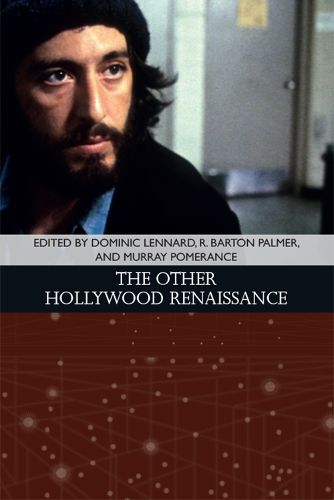Readings Newsletter
Become a Readings Member to make your shopping experience even easier.
Sign in or sign up for free!
You’re not far away from qualifying for FREE standard shipping within Australia
You’ve qualified for FREE standard shipping within Australia
The cart is loading…






In the late 1960s, the collapse of the classic Hollywood studio system led in part, and for less than a decade, to a production trend heavily influenced by the international art cinema. Reflecting a new self-consciousness in the US about the national film patrimony, this period is known as the Hollywood Renaissance. However, critical study of the period is generally associated with its so-called principal auteurs, slighting a number of established and emerging directors who were responsible for many of the era’s most innovative and artistically successful releases.
With contributions from leading film scholars, this book provides a revisionist account of this creative resurgence by discussing and memorializing twenty-four directors of note who have not yet been given a proper place in the larger history of the period. Including filmmakers such as Hal Ashby, John Frankenheimer, Mike Nichols, and Joan Micklin Silver, this more expansive approach to the auteurism of the late 1960s and 1970s seems not only appropriate but pressing – a necessary element of the re-evaluation of ‘Hollywood’ with which cinema studies has been preoccupied under the challenges posed by the emergence and flourishing of new media.
$9.00 standard shipping within Australia
FREE standard shipping within Australia for orders over $100.00
Express & International shipping calculated at checkout
In the late 1960s, the collapse of the classic Hollywood studio system led in part, and for less than a decade, to a production trend heavily influenced by the international art cinema. Reflecting a new self-consciousness in the US about the national film patrimony, this period is known as the Hollywood Renaissance. However, critical study of the period is generally associated with its so-called principal auteurs, slighting a number of established and emerging directors who were responsible for many of the era’s most innovative and artistically successful releases.
With contributions from leading film scholars, this book provides a revisionist account of this creative resurgence by discussing and memorializing twenty-four directors of note who have not yet been given a proper place in the larger history of the period. Including filmmakers such as Hal Ashby, John Frankenheimer, Mike Nichols, and Joan Micklin Silver, this more expansive approach to the auteurism of the late 1960s and 1970s seems not only appropriate but pressing – a necessary element of the re-evaluation of ‘Hollywood’ with which cinema studies has been preoccupied under the challenges posed by the emergence and flourishing of new media.